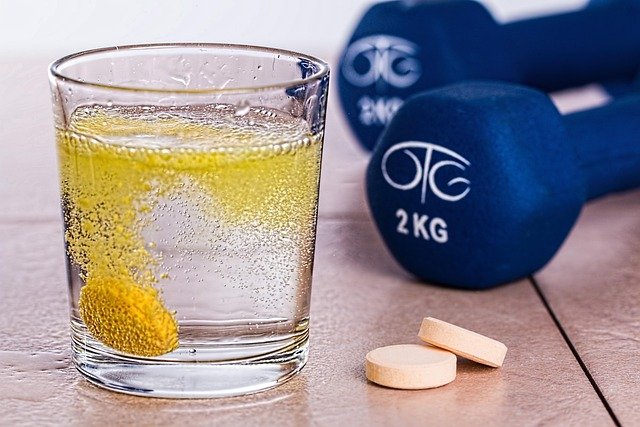Daily Eating Patterns That Support Muscle Repair and Skin Renewal
Practical daily eating patterns can help support muscle repair and skin renewal by combining protein timing, hydration, and nutrient-dense foods. This brief overview highlights key food groups and habits that support recovery and skinhealth through sensible daily choices.

A consistent daily routine of balanced meals and snacks can strengthen both muscle repair and skin renewal processes. Focusing on quality protein sources, timely carbohydrate intake, and foods rich in collagen-building precursors and antioxidants supports tissue rebuilding after exercise and helps maintain skinhealth. Small, repeatable habits — like spacing protein across the day and prioritizing hydration — create an environment where recovery and cellular renewal are more likely to proceed efficiently.
This article is for informational purposes only and should not be considered medical advice. Please consult a qualified healthcare professional for personalized guidance and treatment.
How does protein support muscle repair?
Protein supplies aminoacids that are the building blocks of muscle. Distributing 20–35 grams of protein across meals and a post-workout snack helps stimulate muscle protein synthesis during recovery. Include varied sources such as lean meats, eggs, dairy, legumes, and plant-based blends to ensure a complete amino acid profile. Timing matters: consuming protein within a couple of hours after resistance training can be beneficial for recovery, while steady intake throughout the day helps maintain a positive net protein balance.
What role does collagen play in skinhealth?
Collagen is a structural protein in skin, and dietary approaches can support the body’s ability to renew collagen. Foods that provide amino acids like glycine and proline (found in bone broth, poultry, and dairy) plus vitamin C–rich fruits and vegetables support collagen synthesis. Collagen peptides are sometimes used as supplements; whole-food strategies that combine protein, vitamin C, and zinc also promote the substrates and cofactors the body needs for skin renewal.
How do antioxidants reduce inflammation?
Antioxidants such as vitamins C and E, polyphenols, and carotenoids help neutralize oxidative stress that contributes to inflammation and slower recovery. Incorporate colorful fruits, leafy greens, nuts, and green tea to supply a broad antioxidant mix. A lower inflammatory environment supports both muscle repair and clearer skin by reducing damage to cells and improving the efficiency of repair processes. Balancing antioxidants with adequate protein and micronutrients is more effective than relying on any single compound.
Why is hydration important for recovery and electrolytes?
Hydration affects blood flow, nutrient delivery, and the removal of metabolic byproducts; all are essential for muscle repair and skin health. Regular fluid intake, paired with electrolyte sources like sodium, potassium, and magnesium from whole foods (bananas, leafy greens, nuts, and dairy), helps maintain cellular function. For longer or intense exercise sessions, replenishing electrolytes can support recovery and reduce cramping; for everyday activity, prioritizing plain water and mineral-rich foods is usually sufficient.
Which micronutrients and aminoacids matter most?
Micronutrients including vitamin C, zinc, vitamin A, and B vitamins support collagen production, immune response, and energy metabolism. Essential aminoacids such as leucine play a direct role in triggering muscle protein synthesis, while other aminoacids support connective tissue and skin matrix formation. Eat a variety of vegetables, fruits, whole grains, dairy or fortified plant alternatives, and diverse protein sources to cover these needs; supplementation can be considered when dietary intake is inadequate, under professional guidance.
How do sleep and creatine affect recovery?
Sleep is a cornerstone of recovery: hormonal spikes during deep sleep support tissue repair and skin renewal. Poor sleep can heighten inflammation and blunt protein synthesis. Creatine is a well-studied supplement that can support strength, capacity for high-intensity training, and cellular energy; when paired with appropriate protein and rest, creatine may indirectly support recovery processes. Prioritize consistent sleep, nutrient timing, and consider creatine supplementation after discussing suitability with a healthcare professional.
Daily patterns that bring these elements together are simple: aim for regular meals with adequate protein, prioritize colorful whole foods for antioxidants and micronutrients, keep fluids and electrolytes balanced, and ensure restorative sleep. Adjust portion sizes and macronutrient distribution to your activity level and individual needs. Over time, consistent attention to these eating patterns supports both muscle recovery and ongoing skin renewal without dramatic or restrictive changes.
Conclusion Sustained, practical eating habits—balanced protein distribution, collagen-supporting nutrients, antioxidant-rich produce, proper hydration with electrolytes, and attention to sleep—create an internal environment that favors muscle repair and skin renewal. Integrating these elements into daily life helps optimize recovery and supports long-term skinhealth and physical resilience.




